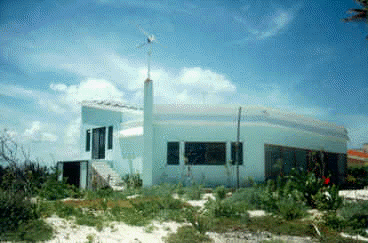Inside:
Original Lyrics and MP3 Demos of original tunes...
PSCH writes..?
This page gives an overview of the basic components required for implementing a small wind-driven energy generation system.
A Real Energy Alternative
The wind that blows through the trees, flies our kites, powers our sailboats, and so much more can power our homes and eliminate our utility bills. Wind energy has come of age and it's use is expanding around the world. We invite you to join the wind revolution.
Here is some basic information to help you make decisions regarding investing in Wind Generated Energy.
Once you have verified that there is adequate wind at your intended site you can consider installing:
And don’t forget, wind turbines aren’t only for generating power...they are ideal for pumping water, either for irrigation or for drinking!
Individual Home-Sized system requirements:
Systems for home use (whether on or off-grid) are comprised of three main components: a wind turbine (and tower), an inverter, and a battery bank.
Wind Turbine - The tower mounted wind turbine produces unregulated alternating current which is converted into constant level DC voltage. This is fed into a battery bank for storage when the wind is not blowing and into an inverter which converts it to household AC voltages. The tower is not included in system pricing since it is usually more economical for the user to procure the materials necessary from a local hardware supplier. Discuss tower options with your system supplier as they can provide valuable information regarding your options.
Towers are usually constructed from Schedule 40 pipe that varies in diameter from 2" to 5" depending on the size of the turbine. The pipe is fitted with guy wires and pulled up onto a concrete base. Free-standing lattice towers can also be erected however they will increase the overall cost of the installation. Tower kits are available from various suppliers, and provide everything but the pipe. These range in price depending on height.
Inverter - Inverters are available in a variety of capacities and options that will affecting pricing. Some are simple manually operated units, others are programmable with special battery charging features and automatic line switchover functions. The inverter makes it possible to use standard appliances and lighting. If the the user decides not to use an inverter, specialty DC appliances can be obtained from some suppliers but they are not widely sold and often cost much more than standard consumer models. For this reason, an investment in an inverter is recommended.
The size of the inverter depends on the total expected electrical load. To determine load, add total electrical consumption of all appliances and lights expected to be run simultaneously (this will be your minimum requirement).
Battery Bank - Batteries are usually available through a local distributor. Golf cart or marine deep cycle batteries are both good options. Batteries present difficulties in shipping since they are classified as hazardous because of the acid used in them, and of course they are very heavy!
Village-scale systems:
Systems for village use will require the same basic components mentioned above, though on a larger scale depending upon power demands. Consult your supplier regarding specific components needed for your situation.